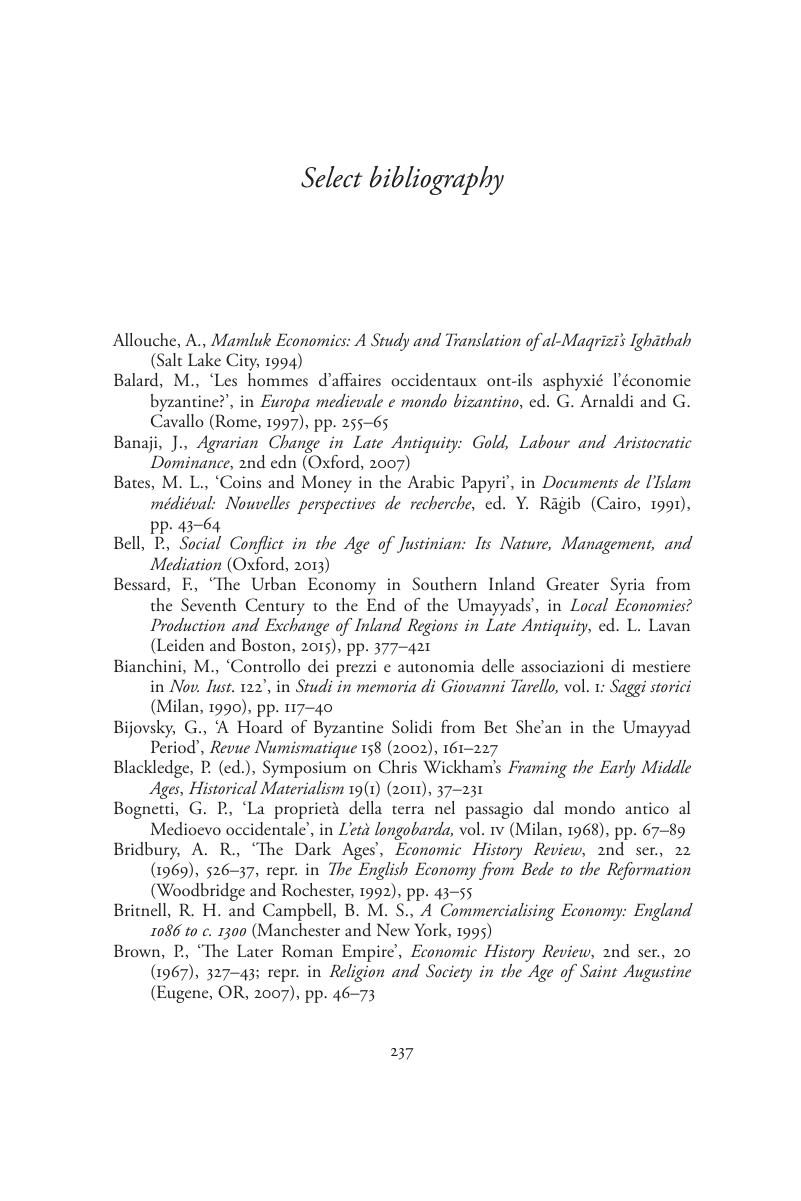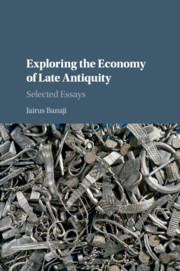Book contents
- Exploring the Economy of Late Antiquity
- Exploring the Economy of Late Antiquity
- Copyright page
- Dedication
- Contents
- Preface
- Book part
- Chapter 1 Mass production, monetary economy and the commercial vitality of the Mediterranean
- Part I Mapping the late antique economy
- Part II Monetary circulation (rules, rhythms)
- Part III Aristocracies and estates
- Part IV Beyond the Mediterranean and late antiquity
- Select bibliography
- Index
- References
Select bibliography
Published online by Cambridge University Press: 05 December 2015
- Exploring the Economy of Late Antiquity
- Exploring the Economy of Late Antiquity
- Copyright page
- Dedication
- Contents
- Preface
- Book part
- Chapter 1 Mass production, monetary economy and the commercial vitality of the Mediterranean
- Part I Mapping the late antique economy
- Part II Monetary circulation (rules, rhythms)
- Part III Aristocracies and estates
- Part IV Beyond the Mediterranean and late antiquity
- Select bibliography
- Index
- References
Summary

- Type
- Chapter
- Information
- Exploring the Economy of Late AntiquitySelected Essays, pp. 237 - 244Publisher: Cambridge University PressPrint publication year: 2015



